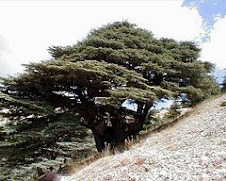article from:
http://bagheera.com/inthewild/van_anim_elephant.htm
VANISHING IN THE WILD: THE ELEPHANT
Throughout history, the elephant has played an important role in human economies, religion, and culture. The immense size, strength, and stature of this largest living land animal has intrigued people of many cultures for hundreds of years. In Asia, elephants have served as beasts of burden in war and peace. Some civilizations have regarded elephants as gods, and they have been symbols of royalty for some.
Elephants have entertained us in circuses and festivals around the world. For centuries, the elephant's massive tusks have been prized for their ivory.
The African elephant once roamed the entire continent of Africa, and the Asian elephant ranged from Syria to northern China and the islands of Indonesia. These abundant populations have been reduced to groups in scattered areas south of the Sahara and in isolated patches in India, Sri Lanka, and Southeast Asia.
Demand for ivory, combined with habitat loss from human settlement, has led to a dramatic decline in elephant populations in the last few decades. In 1930, there were between 5 and 10 million African elephants. By 1979, there were 1.3 million. In 1989, when they were added to the international list of the most endangered species, there were about 600,000 remaining, less than one percent of their original number.
Asian elephants were never as abundant as their African cousins, and today they are even more endangered than African elephants. At the turn of the century, there were an estimated 200,000 Asian elephants. Today there are probably no more than 35,000 to 40,000 left in the wild.
Description
At first glance, African and Asian elephants appear the same. An informed eye, however, can distinguish the two species. An African bull elephant (adult male) can weigh as much as 14,000 to 16,000 pounds (6300 to 7300 kg) and grow to 13 feet (four meters) at the shoulder. Its smaller relative, the Asian elephant, averages 5,000 pounds (2300 kg) and 9 to 10 feet (3 meters) tall.
The African elephant is sway-backed and has a tapering head, while the Asian elephant is hump-backed and has a huge, domed head. Probably the most interesting difference between the two species is their ears. Oddly, the African elephant's large ears match the shape of the African continent, and the Asian elephant's smaller ears match the shape of India.
Elongated incisors (front teeth), more commonly known as tusks, grow up to 7 inches (18 cm) per year. All elephants have tusks, except for female Asian elephants. The largest of the African bulls' tusks can weigh as much as 160 pounds (73 kg) and grow to 12 feet (4 meters) long. Most animals this big, however, are gone; they were the first to be killed for their ivory.
Most African elephants live on the savanna, but some live in forests or even deserts. Most Asian elephants live in forests. As herbivores (plant eaters), elephants consume grass, foliage, fruit, branches, twigs, and tree bark. Elephants spend three-quarters of its day eating, and they eats as much as 400 pounds (880 kg) of vegetation each day. For this task, they have only four teeth for chewing.
In the hot climates of their native habitats, elephants need about 50 gallons (190 liters) of water to drink every day. Elephants boast the largest nose in the world, which is actually part nose and part upper lip. It is a large natural hose, with a six-gallon (23-liter) capacity.
Role in the Ecosystem
Elephants are considered a keystone species in the African landscape. They pull down trees, break up bushes, create salt licks, dig waterholes, and forge trails. Other animals, including humans, like the pygmies of the Central African Republic, depend on the openings elephants create in the forest and brush and in the waterholes they dig.
Even elephant droppings are important to the environment. Baboons and birds pick through dung for undigested seeds and nuts, and dung beetles reproduce in these deposits. The nutrient-rich manure replenishes depleted soil. Finally, it is a vehicle for seed dispersal. Some seeds will not germinate unless they have passed through an elephant's digestive system.
Behavior
Wild elephants have strong family ties. The females and young are social, living in groups under the leadership of an older female or matriarch. Adult males are solitary, although they stay in contact with the females over great distances, using sounds well below the range of human hearing. Family groups communicate with each other using these low-frequency vibrations. It is an eerie sight to see several groups converging on a waterhole from miles apart, apparently by some prearranged signal, when human observers have heard nothing.
The natural lifespan of an elephant, about 70 years, is comparable to a human's. Elephants reach breeding age at about 15 years of age. Females generally give birth to one 200-pound baby after a 22-month pregnancy.
Elephants and Humans
Humans first tamed Asian elephants more than 4,000 years ago. In the past, humans used elephants in war. Elephants have been called the "predecessors to the tank" because of their immense size and strength. They were important to military supply lines as recently as the Vietnam War in the 1960s. Although African elephants are harder to train than Asian, they too have worked for humans, mostly during wartime. For example, the elephants that carried Hannibal's troops across the Alps to attack the Romans in 200 B.C. were African.
In modern times humans use elephants primarily for heavy jobs like hauling logs. An elephant is the ultimate off-road vehicle and can get tremendous traction even on slippery mud. An elephant actually walks on its toes, aided by a great flesh-heel pad that can conform to the ground.
In some remote areas of Southeast Asia it is still more economical to use elephants for work than it is to use modern machinery. Scientific researchers use elephants for transportation in the hard-to-reach, swampy areas they study, and tourists ride elephants to view wildlife in Asian reserves. Elephants are the ideal mobile viewing platform in the tall grass found in many parks.
Asia has always had a strong cultural connection to the elephant. In Chinese, the phrase "to ride an elephant" sounds the same as the word for happiness. When Thailand was called Siam, the sacred White Elephant dominated the flag and culture. According to Thai legend, in the beginning all elephants were white and flew through the air, like the clouds and rain.
Thousands of years later, a white elephant entered the side of Queen Sirimahamaya as she lay sleeping. Later she gave birth to Prince Siddhartha, the future Guatama Buddha. Among the predominantly Buddhist kingdoms of Southeast Asia, the most auspicious event possible during a monarch's reign was the finding of a white elephant.
Full article continued at:
Wild Elephants Vanishing; Causes and Solutions
Please also view our partner sites:
Clean Green Power as a Path to World Peace
Writings of Yuya Joe: Stories, Poems, Lyrics, Rasta Prayers
Denmark’s Ritual of Militarisation
-
On December 8, 2025, the Copenhagen Security Summit convenes at Falkoner
Centret in Frederiksberg. With 35 speakers and more than 1,200
participants, it ...
6 hours ago



No comments:
Post a Comment